#Juan Manuel Rodríguez
Text
Imputado por la Mega Estafa en Berisso pide periciar a judiciales por el “síndrome de burnout”
Imputado por la #MegaEstafa con #pagaréstruchos en #Berisso pide periciar a #judiciales por el “#síndromedeburnout”
#Judiciales | #estafas | #saludmental | #abusodedrogas | #defraudación
Más info:
En una iniciativa sorprendente, uno de los imputados en la Mega Estafa con pagarés truchos de Berisso busca evaluar la salud mental de los judiciales bonaerenses.
Berisso, Buenos Aires, con información de RealPolitik – En el marco de la investigación por la Mega Estafa en Berisso, Leonardo Vitale, uno de los acusados y detenido en prisión, presentó una solicitud insólita: pericias para evaluar…
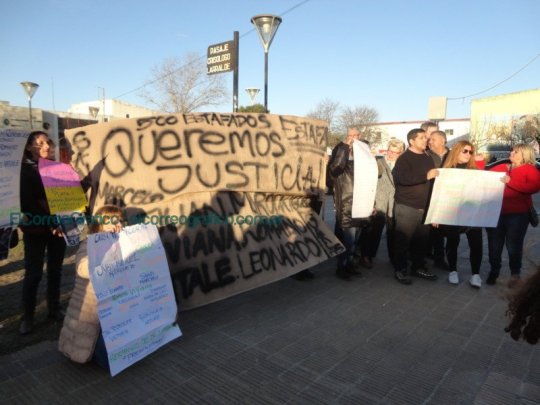
View On WordPress
#Álvaro Garganta#asociación ilícita#Berisso#Betina Lacki#burnout#cabeza quemada#defraudación#embargos judiciales#estafas reiteradas#Juan Manuel Rodríguez#Juzgado de Garantías Nº 2#Leonardo Vitale#Marcelo Sandi#Mega estafa#operación criminal#pagarés falso#pagarés truchos#Ramona Pedrozo#salud mental#servicio judicial#síndrome “burnout”#síndrome de burnout#trabajadores judiciales#Viviana Romano
0 notes
Text
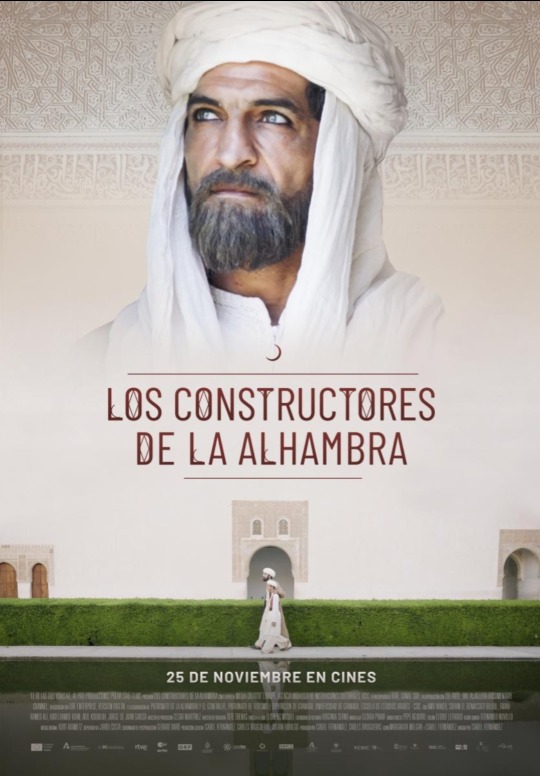
youtube
@asongofstarkandtargaryen I saw another upcoming work involving historical drama (although it's a docufilm) of the Nasrid dynasty. It could be interesting because period dramas involving the Nasrids is Isabel with Muhammad XII "Boabdil", Muhammad XIII "al-Zagal" and Muley Hacen's family, like media often focus on the last Nasrids, so it's cool to see works about other members of the family.
Synopsis
1340. Knowing that his besieged Kingdom of Granada is doomed to disappear due to the advance of neighboring kingdoms, Yusuf I, the Sultan of Granada, embarks on the construction of a building that reflects the splendor of his civilization and defies oblivion: the Alhambra palaces. His vizier, Ibn al-Khatib (Amr Waked), a poet and genius ahead of his time, participates in this colossal challenge. But when the sultan's son, Muhammad V, inherits the throne and involves him in the new policies of his reign, the vizier is torn between the ideas of his old world and the new one that is emerging. Its chronicles tell us the history of the Granada of the s. XIV, the swan song of Muslim domains of the Iberian peninsula.
Cast & Main characters
Amr Waked as Ibn al-Jatib "Lisaneddín" (15th November 1313, Loja, Granada, Andalusia-1374, Fez, Morocco). The main lineage of his family belonged to a lineage of Syrian Arabs called the Benu Alwazir, who later changed their name to Benu Aljathib and who, having passed to Spain, settled in the city of Loja, from where they moved to Córdoba, then to Toledo, and finally his father settled in Granada. The Benu Aljathib house achieved social success, wealth and large estates. His grandfather Saíd was a qadi (a judge), a cavalry general, and his father Abdallah, a man of letters and governor of Granada.
He was an outstanding young man, his education was directed by the wisest doctors of his time in theology and law, philosophy, mathematics and medicine, excelling mainly in historical and political studies. From his early youth, he experienced serious setbacks because his father Abdallah fell out of favor with Muhammad IV. He spent much of his life at the court of Muhammad V al-Ghanî, whom he served as historian and minister (guazir) and with whom he established friendly ties. He carried out high political functions, as he was appointed double vizier (“du l-wizaratayn”), which earned him the nickname of Dhû l-wizaratayn or "the man of the two vizirates". Some of his poems decorate the walls of the Alhambra.
Farah Hamed Ali as Umm al Hassan (?, Málaga, Andalusia-?). Daughter of the qadi and doctor of Loja, Abu Ya Far al Tanyali, she was an expert in Koranic readings, a medical scholar and poetress. She helped Ibn al-Jatib in his writing of the "Treat of the plague" and together they manage to state some concepts and procedures like the notion of contagion and recommended isolating the sick and destroying their sheets and rigorously described the development and spread of an epidemic.
Mehdi Regragui as Ibn Jaldún (Tunis, 27th May, 1332-Cairo, 19th March, 1406). Historian, sociologist, philosopher, economist, geographer, demographer and statesman of Andalusian origin, whose family fled to North Africa, he was born in what is now Tunisia. He is considered one of the founders of modern historiography, sociology, philosophy of history, economics, demography and the social sciences in general. He is primarily known for his work Muqaddimao (Introduction to Universal History), Prolegomena to the Book of Evidence, a record of the beginnings and events of the days of the Arabs, Persians, and Berbers and their mighty contemporaries, which constitutes an early essay in philosophy, of history and sociology, the latter discipline of which it is often considered the predecessor.
Adil Koukouh as Muhammad V (Granada, Andalusia, 4th January, 1339- Granada, Andalusia, 16th January, 1391) son of Yusuf I and Butayna. Eighth Nasrid sovereign of Granada between 1354-1359 and later from 1362 to 1391. His reign can be considered the most prosperous since the establishment of the Nasrid dynasty. Father of Yusuf II and Nars. Muhammad was enthroned at the age of fifteen under the tutelage of Vizier Ridwan, who took the reins of government. Immediately, Muhammad V ordered that Ismaíl be confined, due to the threat that he posed to his government, along with his mother and sisters, in one of his father's alcazars, a sumptuous and comfortable palace that was close to the Royal House. and where they were treated generously. Muhammad signed a peace treaty with Pedro I of Castile, becoming his vassal and ally. With regard to Aragon, initially there were some conflicts, but he ended up signing peace with Pedro IV of Aragon, although in 1358 his vassalage with Castile forced him to align with Pedro I in the War of the Two Pedros, which pitted them against Aragon. Likewise, he tried to improve relations with the Benimerin Sultanate, although the final aspirations of the Maghreb were to seize al-Andalus. Their relationship improved markedly after the accession of Abu Salim.
In 1359 for a conspiracy led by the slave Maryam, wife of his father Yusuf I, and several relatives, including his future cousin Muhammed VI, to place his half-brother Ismail II on the throne. The conspirators scaled the walls of the Alhambra and reduced the royal guard, assassinated the vizier Ridwan and freed Ismaíl, who was proclaimed sultan. Muhammed avoided death because he was in the Generalife with his son Yusuf II (grandfather of Muhammad VIII, Muley Hacen and Al Zagal) and was able to escape more quickly to Guadix, settling in his Alcazaba and later exiled himself to Fez, the capital of the Merin Sultanate. Pedro I was forced to accept an alliance with Ismaíl due to the internal rebellions in Castile of his bastard siblings, led by the future Enrique II (supported by Pedro IV of Aragón), children of Alfonso XI with Leonor de Guzmán (they had together 10 children whom Alfonso widely favored them with noble titles and a lot of political power) he was not strong enough to help Muhammad V.
Ismail II was assassinated on the orders of Muhammad VI, who took control of Granada. Muhammad V returned to the peninsula, to the territories controlled by the Benimerines, and began attacks against his cousin, taking advantage of the fact that Pedro I was already attacking the territories of Muhammad VI. After several joint attacks, Mohammed V regains his position as sultan after Muhammed VI was assassinated by Pedro I, by throwing a spear at him.
During the First Castilian Civil War (1366-1369) he remained faithful to Pedro I, assassinated in 1369 by his bastard brother Enrique II, the first king of the Trastámara dynasty, organizing the attack on various Christian border towns. After the war, he signed a peace agreement with Enrique II that opened the way to a great period of stability. Muhammad launched some measures to eliminate the influence that the Benimerines exercised over the Nasrid Kingdom and recover some territories controlled by them.
Ari Inti Ruiz Girón as young Muhammad V
Hamid Krim as Yusuf I (Granada, Andalusia, 29th June, 1318 – 19th October, 1354), seventh sultan and sovereign of the Nasrid dynasty that held power between 1333 and 1354. Son of Ismaìl I and Bahar. He had nine children: three boys and six girls. His heir Muhammad V and his daughter Isa were fathered with his slave Butayna, while Ismail II, Qays, Fátima, Mumina, Jadila, Sams and Zaynab with his servant Maryam.
Firstly he was an ally of Alfonso XI of Castile, but then he allied with the Marin Sultanate who had crossed the Strait of Gibraltar under the orders of the Sultan of Fez, Abu al-Hasan ben Uthman, and some parts of the kingdom of Granada and its surroundings were ocuppied by them, and a war between Castile and Granada started, although it ended when Alfonso XI died in 1350 due to the Black Death.
In the Alhambra he carried out great works such as the Comares Palace, one of the jewels of Andalusian architecture, while in 1349 he inaugurated the Granada Madrasa, the first university in the city. He was assassinated in 1354 while praying in the aljama mosque of the Alhambra.
Diego León García Manotas as Ismaíl II (1339 – Granada, 28th June, 1360). The second son of Yusuf I and the ninth Nasrid sovereign of Granada, who reigned from August 1359 to June 28, 1360. He was the eldest son of the second wife of Yúsuf I, Maryem, born nine months after his half-brother Muhammad V, in 1339. Conspired with his mother, sister, and relative Muhammad VI to seize the kingdom. The conspirators took the palace by surprise in August 1359. Muhammed V managed to escape with his family, first to Guadix, and then to Morocco where he obtained asylum.
At first he was his father's heir, but long before his death Yusuf named Muhammed heir. For this reason Ismaíl and his supporters overthrew Muhammed V, although the reign of Ismail II was short, barely ten months, because his brother-in-law Muhammad had his own ambitions.
Ismaíl and his brother Qays were assassinated in a prison in the Alhambra by order of their brother-in-law Muhammad VI on June 28, 1360, and he became sultan, although he was defeated by Muhammed V and Pedro I's armies.
Alicia Mohíno as Fátima
Manuel Rodríguez Pérez as Abu Ishaq al-Shatibi (?-1388, Granada, Andalusia), was a Sunni jurist who followed the Maliki Islamic school. The place and date of his birth is unknown. His family is descended from the Banu La khm tribe who trace their lineage back to Qahtan who, among many other achievements, founded an Arab kingdom in Al-Hira, near modern Kufa (Iraq). However, one of his surnames, "Al-Shatibi", points to the city of Xátiva (Valencia), indicating that he was a descendant of immigrants from that city.
Sofian El Benaissati as Ibn Zamrak (Granada, Andalusia, 1333 - 1394) poet and politician from al-Andalus. Some of his poems still decorate the fountains and palaces of the Alhambra. Of humble origins, thanks to his teacher Ibn al Jatib he was presented at the court of the Nasrids. He accompanied Sultan Muhammad V to Morocco and when Muhammad was restored to the throne of Granada in 1361 he appointed him as his private secretary and appointed him court poet. When Ibn al Jatib was removed from the office of vizier, in 1371, Ibn Zamrak replaced him and the sultan ordered him to arrest him and then send a group of assassins to kill him in the prison of Fez. Subsequently, Ibn Zamrak himself was imprisoned for nearly two years by Yusuf II and was assassinated on the order of Sultan Muhammed VII while reading the Koran in his home.
Pablo Jiménez Cantero as kid Ibn Zamrak
Jorge de Juan as Ibn al-Yayyab (1274, Granada, Andalusia - Granada, 1349) poet and politician during the Nasrid dynasty of the Kingdom of Granada. He was the predecessor of Ibn al-Jatib as vizier at court.
Of humble origins and deep religious background, his nickname seems to refer to his father's trade, which sewed the pockets of the tunics (yayb, pocket). He entered the Diwan al-insa when he was about twenty years old and remained there until his death. With Yusuf I he reached the vizirate of the kingdom. He was the oldest of the poets, and thanks to his extraordinary ability to navigate changes in power, he met six sultans, Muhammad II, Muhammad III, Nasr, Ismail I, Muḥammad IV and Yusuf I. He died during the Black Death epidemic that ravaged Europe, but apparently not because of it. He was buried in the Puerta de Elvira cemetery and the sultan himself attended his funeral. As a courtly poet that he was, he put his poetry at the service of the sultans, and the laudatory quasi are abundant in his work. A very prolific poet, he initiated a style that would later be followed by both Ibn al-Jatib and Ibn Zamrak. The discovery of his written work has allowed us to know the place occupied by the poems that were written to be carved in the palaces of Granada.
Abel Gutiérrez Romera as chief builder
More info:
Duration: 90 minutes
Based on the chronicles of the 14th century, written by the vizier and poet of the Kings of Granada Ibn al-Jatib and with a unique access to shoot in the building, the director Isabel Fernández immerses the viewer in a journey through space and time to discover the characters responsible for the construction of the Alhambra palaces, their history and the reasons that prompted them to create this unique work of art. An astral and poetic journey that explores the architectural and philosophical meaning of one of the most iconic buildings in the world.
The production of the documentary began a year ago and the release date is finally known: November 25 in theaters.
The documentary is located in the Nasrid palaces and the Alhambra and Generalife precincts, in other buildings from the Nasrid period in the city of Granada, such as the Cuarto Real de Santo Domingo and the Corral del Carbón, and in the Atarfe quarries.
The script, written by the director herself and Margarita Melgar, has had the scientific support of the best experts from the Board of Trustees of La Alhambra, the University of Granada and the School of Arab Studies of the CSIC, in an unprecedented artistic-scientific collaboration. It is the first time that the Alhambra hosts a filming of this style. It is probably the most restrictive Spanish building when it comes to authorizing filming, and perhaps one of the most restrictive in Europe. In order to film inside, the production had to assume strict conditions and design a shooting plan fully adapted to the requirements of such a special space, which is a World Heritage work of art. The international star, the French-Egyptian actor Amr Waked (Syriana; Salmon Fishing in Yemen; Lucy) brings to life the protagonist Ibn al-Jatib, a fundamental figure in the Iberian Peninsula in the 14th century, author of the Chronicle of the Kings of Granada, and which is the first-hand voice that tells the secrets of the Alhambra. Other actors of North African origin such as Sofian El Benaissati ('La Hija'; 'Skam España', 'Gigantes'), Hamid Krim ('El Cid', 'Desaparecidos', 'La dévoilée femme', 'Les de l'hoquei'), Farah Hamed Ali ('Élite'; 'Retorno a Hansala', 'El Cid', 'Vis a Vis', 'Desaparecidos'), or Adil Koukouh ('Entrevías'; 'El Cid'; 'A escondidas') complete this fresh from a time when Andalusia was one of the most advanced centers of knowledge in Europe.
'Los constructores de la Alhambra' is a production of El de las Dos Vidas A.I.E., Al Pati Produccions and Polar Star Films and has the support of Media Europa Creativa, the Andalusian Agency for Cultural Institutions, the ICEC, the Board of Trustees of the Alhambra and the Generalife, the Granada Tourist Board, the Institut Ramón Llull, and the participation of Canal Sur, RTVE, the Franco-German cultural channel ARTE/ZDF, the Austrian public television ORF, Aljazeera Documentary, Canal Sur, and ORF Enterprise. The film will be distributed in theaters by Digital Version.
In this documentary feature film, narrative elements of the traditional documentary are combined with historical recreation, CGI and digital 3D, to recreate Nasrid Granada, the Nasrid society of the 14th century and the construction process of the Alhambra palaces, highlighting the knowledge scientists that the Andalusian wise men left us in disciplines such as astronomy, mathematics, medicine, agronomy or navigation.
The narrator of this adventure is Ibn al-Jatib, chronicler, poet, scientist, physician, philosopher, and vizier. One of the most important and unknown intellectuals of the 14th century in the Iberian Peninsula. From his office in the Diwan al-Insa (the Royal Chancellery), inside the Alhambra, he reminds us and revives the history of the building. At his side we meet Yusuf I and Mohammed V, the two kings who planned the construction of the Palaces of Comares and Leones, which still fascinate visitors today with their beauty and harmony. And we will also meet the other great poet of the Alhambra Ibn Zamrak, and the doctor Umm al Hasan, disciples of Ibn al Jatib.
For its director 'Los constructores de la Alhambra' is a historical documentary fiction for the here and now and a project to bring cultures closer together and remind us that the human being that we are is built on multiple layers, and that what we often see as strange, is also part of us"
The director explains the origin of the project: “I have always been fascinated by the Muslim legacy in Europe and especially the Alhambra, which is its masterpiece. Likewise, I have always been surprised by how little has been told about this part of history and its people. That is why 6 years ago I decided to immerse myself in the history of Granada to try to understand the meaning of that building that fascinates everyone. This great story about its creation was there asking for someone to come forward and tell it. I would like it to serve to reflect on a fundamental part of who we are, and to vindicate the weight of Al-Andalus in the creation of European culture”.
"Between the 8th and 15th centuries, Muslims, Christians and Jews lived together in Al-Andalus and produced one of the greatest centers of innovation and knowledge since the classical world. Granada was the heir to that knowledge, and the last episode of that historical period. We rebuild that world to try to understand it and project its wisdom towards our present", said Isabel Fernández, during the presentation of the film at the Nasrid monument.
Its premiere is scheduled for the next Malaga Film Festival.



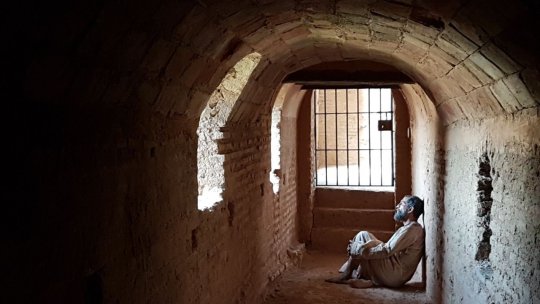
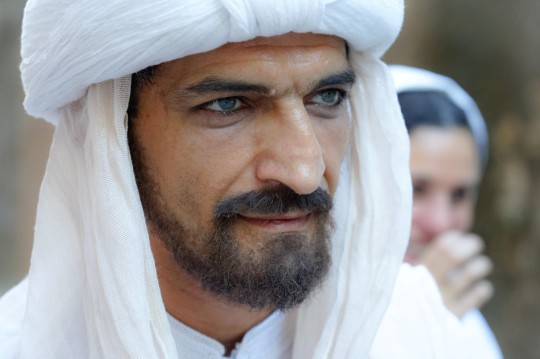
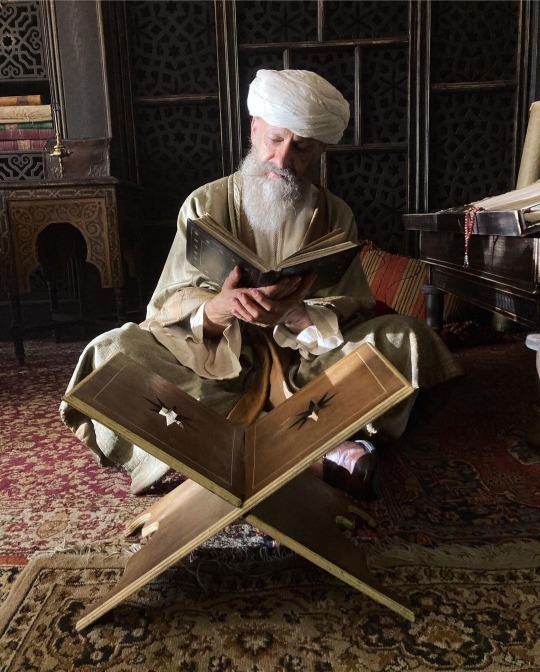



#los constructores de la alhambra#docufilm#period dramas#amr waked#farah hamed ali#medhi regragui#adil koukouh#hamid krim#sofian el benaissati#jorge de juan#alicia mohíno#muhammad v of granada#yusuf i of granada#ismaíl ii of granada#ibn al jatib#ibn jaldún#ibn zamrak#diego león garcía manotas#manuel rodríguez pérez#pablo jiménez cantero#abel gutiérrez romera#ari inti ruiz girón#ibn al yayyab#al shatibi#news#la alhambra#granada#long post#Youtube
10 notes
·
View notes
Video
youtube
El cumbanchero by Rubén González from the album “Introducing...”
#music#rubén gonzález#orlando lopez#manuel guajiro mirabal#alberto valdés#carlos gonzález#carlos puisseaux#nick gold#roberto garcía#duncan cowell#amadito valdés#manuel mirabal#jerry boys#cachaito lopez#rafael hernandez#puntillita#jose antonio rodríguez#juan de marcos gonzalez#world circuit#manuel licea lamouth#rafael hernández marín#orlando cachaíto lópez
14 notes
·
View notes
Text
DÍAS DE GUARDAR Domingo 16 de julio de 2023.
Libia rompe burbuja de protección y acepta contienda
El “fenómeno” Xóchitl también impacta en Guanajuato
Juan Hernández: de nadar de muertito a conseguir votos
Arte: @PincheEinnar
Continue reading Untitled

View On WordPress
#Andrés Manuel López Obrador#Diego Sinhue Rodríguez#Juan Hernández#Libia Dennise García#Marko Cortés#Xóchitl Gálvez
0 notes
Text
Exposición "Un poco de mí", Colectiva
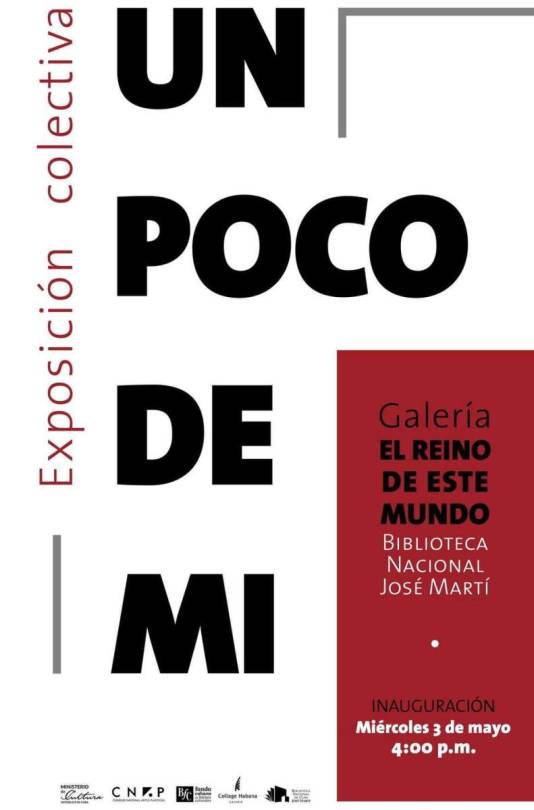
View On WordPress
#2023#Adigio Benitez#Adonis Flores#Amelia Peláez#Belkis Ayón#Benito Ortiz#Biblioteca Nacional José Martí#Eduardo Abela#Eduardo Roca (Choco)#Ernesto Fernández Nogueras#Ever Fonseca#Flora Fong#José Villa Soberón#Juan Moreira#Lázaro Saavedra#Lesbia Vent Dumois#Liudmila & Nelson#Manuel Mendive#Mariano Rodríguez#Muestra Colectiva#Nelson Domínguez#Osneldo García#Pedro Pablo Oliva#Raúl Corrales#Rafael Zarza#Reinerio Tamayo#Rene de la Nuez#Roberto Fabelo#Ruperto Jay Matamoros#Sandra Ramos
0 notes
Text
Compañeros, hermanos, amigos escuchen y regocíjense.
Europa está en caos, el imperio español se está derrumbando, Portugal continúa perdiendo influencia y Francia pelea en demasiados frentes, es hora de unir nuestras fuerzas, nuestros pueblos pelearán por la libertad, por la justicia ¡Por América!
No sólo derrotaremos a los gachupines, portugueses y franceses en el campo de batalla ¡También nos veremos mejor que ellos mientras lo hacemos!
Esta encuesta determinará quién de todas estas sensuales personas latinoamericanas será la que opacará más a los europeos, a la que más gente le encantaría tener en su cama por una noche ¡El mas grande ejemplo de exquisitez latinoamericana!
¿Quieres nominar a alguien para tan aclamado premio? Puedes hacerlo aquí
Reglas:
1. Puedes nominar a todas las personas que quieras, el formulario no tiene un límite
2. Animamos a que manden propaganda (en inglés o español o portugués)
3. Sexy man/hombre sexy es un término sin género, todos, todas y todes son bienvenidos.
4. Serán juzgados en base de las edades que tenían durante las guerras por la independencia y los admins se esforzarán para encontrar los retratos apropiados.
Eng:
Comrades, brothers, friends listen and rejoice.
Europe is in chaos, the Spanish empire is collapsing, Portugal continues to lose influence, and France is fighting on too many fronts. It is time to join forces, our people fight for liberty and for justice. For America!
We will not only defeat the gachupines, the Portuguese and the French on the battlefield. We will also do it while looking better than them!
This contest will determine who among these sexy Latin Americans outshines the Europeans the most, who most people would invite to their bed for a night. The best example of the exquisiteness of Latin America!
Do you want to nominate someone for such an honor? Nominate them here.
Rules:
You can nominate as many people as you want. The form does not have a limit.
Propaganda is encouraged (in English or Spanish or Portuguese)
Sexyman is a gender neutral term.
They will be judged based on the age they were during the wars for independence and the admins will try their best to find appropriate portraits.
La lista hasta ahora/The existing list is here:
Virreinato de Nueva España
México:
1. Agustin de Iturbide
2. Leona Vicario
3. Juan Aldama
4. José Maria Morelos y Pavón x3
5. Vicente Guerrero x2
6. Antonio Lopez de Santa Anna
Virreinato del Nuevo Reino de Granada:
Colombia:
7. Antonio Nariño x3
8. Antonio Morales Galavís
9. Policarpa Salavarrieta x2
10. Francisco de Paula Santander x 2
Venezula:
13. Simón Bolívar x2
14. José Antonio Paez
Virreinato del Perú:
Perú
11. Manuela Sáenz de Vergara y Aizpuru
12. Micaela Bastidas
Ecuador:
15. Manuela a.k.a Manuelita Saenz x4
Bolivia:
16. Antonio José de Sucre x 2
17. María Ana Carcelén de Guevara y Larrea-Zurbano
Chile:
21. Manuel Javier Rodríguez y Erdoíza
22. José Miguel Carrera Verdugo
Virreinato del Río de la Plata:
Argentina:
18. Manuel Belgrano
19. José de San Martín x 3
20. Martín Miguel de Güemes
Uruguay:
23. Manuel Ceferino Oribe y Viana
24. Juan Antonio Lavalleja
25. José Fructuoso Rivera y Toscan
Haití:
26. Toussaint L’Ouverture
Brasil/The Empire of Brazil:
27. Joaquim Pires de Carvalho e Albuquerque
28. Maria Quitéria de Jesus x2
29. Joaquim Gonçalves Ledo
30. Maria Leopoldina
31. Pedro I
32. Hipólito José da Costa Pereira Furtado de Mendonça
33. José Bonifácio de Andrada e Silva
34.Francisco Gomes da Silva
35. Domitila de Castro Canto e Melo, Marquesa de Santos
35 notes
·
View notes
Text

Nacida un 8 de julio de 1893 en el barrio de Tacubaya, fue la más bella y adelantada de su época. Nahui Olin, poeta y pintora pero sobre todo musa, nació en la Ciudad de México en 1893. Hija del General Manuel Mondragón, sobre quien recae la ejecución de la decena trágica, creció en el seno de una familia adinerada, en pleno Porfiriato.
Nahui Olin tenía lava en vez de sangre y el cuerpo como provocación. El desafío era su norma y la creatividad le estallaba a borbotones. Asombró y posó para Diego Rivera, escandalizó a México en los años de sus vanguardias, fue la loca en la época de la locura, escribió poemas, pintó a su aire, mostró su cuerpo como obra de arte en portadas de revistas de variedades y asistió sola a su ocaso de la vida dando clases en un colegio donde nadie sabía que el nombre de aquella mujer que vivía entre la escasez medio siglo atrás fue sinónimo de frenesí.
Los grandes ojos de Nahui Olin "eran de un verde felino y su pelo una hoguera. Era como si lo fuera iluminando todo a su paso, como si el mundo se incendiase al calor de su mirada". Nahui Olin no era Nahui Olin en el comienzo sino Carmen Mondragón (1893-1978). Nahui Olin, en náhuatl, en azteca, significa el último sol, pero también el primero, el que deslumbra y ciega, el poder con que el astro hace girar a los planetas y el que mueve los ciclos del universo.
Su padre, el general Manuel Mondragón, se convirtió en más rico aún diseñando un cañón, una carabina y un fusil automático y llegó a ser secretario de Guerra y Marina con el gobierno de Victoriano Huerta, quien provocó su exilio en París. Allí vivió la Carmen niña, quinta de ocho hermanos, ocho años, desde que tenía cuatro. Piano, danza, pintura, teatro, literatura.
Pero nada en su vida es como en la vida de los demás: Carmen se casa por contentar a su padre con un cadete que la turbó al verlo montado a caballo con la gallardía que un jinete puede despertar al verlo al trote por un cuartel. Se llamaba Manuel Rodríguez Lozano y la boda fue portada en los Hola aztecas en plena revolución mexicana. Pero, exiliados de nuevo, vivirán un poco cada uno por su lado en el París de cuando París era París, de cuando había que estar en París, cuando París era Picasso, Juan Gris, Braque y Matisse. Y a ellos Carmen los conoció y los trató. Allí prendió la lava que nunca se extinguió, o que acabó extinguiéndola.
Luego de tener a varios amantes, a los 40 años conoció al capitán Eugenio Agacino, de quien se enamoró perdidamente. El buen amor la llevó a crear una prolífica colección de poemas que aludían al cosmos y pinturas de estilo naïf. La muerte de Agacino a manos del mar fue un golpe del que Carmen jamás se recuperó. Se retiró de la vida pública en 1934. Nahui optó por la soledad que acarreó una devastadora locura; vivía con decenas de gatos y se le podía encontrar deambulando por la alameda. Nahui: deshecha, demente, sucia, obesa, sin un centavo, cayó para no levantarse jamás.
Enferma, pidió a sus sobrinas que la trasladasen a la recámara donde nació, y el 23 de enero de 1978, a los 85 años, Nahui Olin cerró para siempre sus bellos y enormes ojos verdes. Sus restos descansan en el Panteón Español de la Ciudad de México.
20 notes
·
View notes
Text

Llamó a la Alianza Histórica como alternativa a la polarización política en Venezuela
Manuel Isidro Molina: Nicolás Maduro y María Corina Machado son candidatos de alta peligrosidad para Venezuela
Caracas 26/10/23. (PS).- Manuel Isidro Molina, presidente del Movimiento Popular Alternativo, MPA y candidato independiente a la presidencia de la República, advirtió este jueves que tanto el presidente de la República Nicolás Maduro como la recién electa candidata en la primaria de la Plataforma Unitaria Democrática, María Corina Machado, “son dos candidatos presidenciales de alta peligrosidad para la paz y el desarrollo armónico de Venezuela, cuando expresan la pretensión de reinstalar la extinta polarización como parte de sus respectivas campañas a las presidenciales de 2024”.
Explicó que de acuerdo al diagnóstico que han hecho desde su organización política, concluyen que el país “ha sido sometido a la irracional e irresponsable confrontación entre dos facciones de poder que se han dedicado durante cuarto de siglo a destrozar las instituciones, desestructurar a la sociedad y empobrecer y desarticular a la familia venezolana”.
En cuanto a evento de la primaria realizada por un sector de la oposición, Molina lo definió como un hecho político de importancia con el cual ni él ni su organización tienen vinculación alguna y no desean opinar. “Ellos (la PUD) tienen sus propias responsabilidades debido a que esas primarias tienen unos resultados cuantitativos y porcentuales que han generado una serie de acontecimientos políticos que están en desarrollo”.
Agregó, “esto incluyen el abuso de poder y la agresividad por parte del gobierno nacional que ha motivado la acción inaudita de la Fiscalía General de la República para comenzar un proceso de persecución penal contra los miembros de la Comisión Nacional de Primaria”.
Para el dirigente del MPA, esta situación refleja el “fracaso simultaneo de los dos bandos que han destrozado a Venezuela en las últimas décadas. Son hechos graves que tienen una potencialidad de enrarecimiento de la situación política social con efecto en lo económico y que seguramente va a agravar la situación preocupante de empobrecimiento general de la población”.
Aseguró que el verdadero problema del país sigue “intacto y sin solución” tal como el empobrecimiento general de la población, la extinción del salario y las prestaciones sociales además de la ruina de los pensionados y jubilados, hambre desnutrición, enfermedad y muertes prematuras sumado a una gigante ola migratoria al exterior de más de siete millones y medio de venezolanas y venezolanos reflejados en decenas de países alrededor del mundo”.
Manuel Isidro Molina deploró la alineación que junto a Maria Corina Machado hacen hoy Leopoldo López y Antonio Ledezma, a quienes denominó “los padres de la fracasada salida de 2014” destacando además la presencia de lo que calificó como el “archipiélago del extinto G4 y sus satélites” que en su opinión, le hacen el juego al “abuso de poder y la corrupción de Nicolás Maduro, Cilia Flores, Diosdado Cabello, Jorge Rodríguez, y Tarek William Saab convirtiéndolos en caimanes del mismo caño”.
Hizo un llamado a la organización de la Alianza Histórica por la Reconstrucción Integral de Venezuela como alternativa, “frente a esos dos bandos del desastre la politiquería y la corrupción, teniendo a 2024 como el año que nos da la oportunidad inevadible para derrotarlos simultáneamente en la elección presidencial”.
Juan José Ojeda Díaz / Prensa de Solidaridad
Twitter: @juanjoseojeda
Instagram: @juanjoseojedadiaz
youtube
#venezuela#caracas#ruedadeprensa#entrevista#discursopolitico#convocatoriademedios#prensadesolidaridad#convocatoriadeprensa#Manuel Isidro Molina#Youtube
4 notes
·
View notes
Text

EL GRINGO Y EL. MEXICANO
Gringo: - Hola, de donde eres?
Mexicano: - Hola, soy de México
Gringo: - Aahh! La tierra del Chapo Guzmán, los narcos, la marihuana, crímenes y extorsiones.
Mexicano - Disculpe es usted adicto, verdad?
Gringo - No!!! ¿por qué?
Mexicano: -Porque si usted fuera deportista me habría identificado con Ana Guevara, Hugo Sanchez, Julio Cesar Chavez, el finito, El chicharito Hernández, el Canelo Alvarez, Rafael Márquez, etc.
Y si usted fuera culto, me habría preguntado sobre las grandes culturas como los Mayas, los Aztecas, los Olmecas, los Chichimecas...
Y si usted hubiera viajado me preguntaría por nuestras ruinas arqueológicas, nuestras ciudades coloniales, nuestras grandes megalópolis o nuestras exuberantes playas...
O por nuestra biodiversidad de selvas, playas, desiertos, bosques...
Me habría identificado con nuestros grandes pintores, Diego Rivera, Rufino Tamayo, Frida Kahlo, José Clemente Orozco, o nuestros compositores: Agustín Lara, Consuelo Velázquez, Armando Manzanero, Juan Gabriel Jose Alfredo Jimenez, o nuestros escritores y poetas: Sor Juana Inés de la Cruz, Juan Rulfo, Octavio Paz, Juan José Arreola, Elena Poniatowska, amado Nervo, Jaime Sabines, o nuestros inventores y científicos: Manuel Mondragón, Guillermo González Camarena, Luis Ernesto Miramontes, nuestros cineastas: Ismael Rodríguez, Emilio Fernández, Alfonso Cuaron, Guillermo del Toro, Alejandro González Iñárritu, Emmanuel Lubezki e incluso Luis Buñuel que siendo español adoptó la nacionalidad mexicana...
Y si usted fuera un gourmet me habría preguntado por los Tamales, la Cochinita Pibil, el Mole, el Adobo, los chilaquiles, los Chiles en nogada, el Guacamole, el Pan de Muerto, etc. Por nuestras bebidas: el tequila, El mezcal, los vinos y cervezas.
Sin embargo, veo que solo conoce al proveedor de su adicción...
Sólo quiero probarle que México es mucho más de lo que la gente ignorante cree. Que somos muchos mexicanos honestos, que incluso si no nos conoce le abriremos las puertas de nuestra casa y le encantará conocernos y visitarnos, porque México es aún muchísimo más maravilloso de lo que yo pueda contarle!
SEAN TODOS INVITADOS A MÉXICO
🌹🇲🇽❤️ 2023
7 notes
·
View notes
Photo

Relanzamiento
Terminada la fiesta ─más ajena que propia─ del partido por Copa Argentina, Español se despertó con resaca, sin tener claro dónde había dormido ni en qué calle había dejado el auto. Hizo falta un estadio iluminado, televisación en directo por cable, un rival de Primera División y cinco goles en contra para que el deambular futbolístico del equipo ─habitual para quienes vemos todos los partidos─ decidiera la suerte de Juan Chumba. Punto final para un ciclo que comenzó bien, siguió mejor y terminó ofreciendo su peor cara en las veinte fechas del actual torneo de Primera C. Fútil resulta a esta altura discurrir si Chumba se fue por el desempeño en la goleada o, como se escucha tras bambalinas, porque “el vestuario” ya no le respondía. Agradecimientos por las buenas campañas (pasadas), tibios aplausos y vuelta de página, que esto sigue.
Manuel Maddoni, canal de ingreso de dinero al club para sostener los gastos del primer equipo masculino de fútbol, se hizo cargo “interinamente” del plantel. Las comillas se explican porque, tras el empate ante Atlas en un partido alocado, se rumoreó que Mariano Moramarco (42 años, ex DT de Excursionistas y Berazategui en este mismo campeonato, presente en la platea del España ayer) ya había acordado su arribo al club. Sin embargo, más de veinticuatro horas después del final del partido ante el equipo de General Rodríguez, la confirmación oficial brilla por su ausencia. Al cierre de esta edición, Deportivo Español no tiene director técnico. ( * )
¿Qué sucedió en el partido contra Atlas? Bastante de lo visto a lo largo del torneo, más un poco de novedad. Maddoni hizo la lógica: si Chumba naufragó, que los jugadores experimentados del plantel se hagan cargo de los destrozos. Yossini volvió a ser el volante central y Peralta Salinas, uno de los zagueros. Son los mariscales de la caída en desgracia de un cuerpo técnico que no tuvo flexibilidad ni frescura para torcer el rumbo de un barco a la deriva. En el primer tiempo, Atlas aprovechó el desconcierto local y los estragos que había generado la semana más temblorosa para el equipo españolista. No necesitó más que un poco de fútbol en los pies de Maldonado para ponerse en ventaja. Español sólo pudo inquietar con los movimientos de Gabriel Da Conceicao ─parte de esa cuota de novedad mencionada─ y con un cabezazo muy desviado de Álbarez en la más clara de la primera mitad. Entretiempo habitual en estos últimos meses: el equipo sin rumbo y en desventaja.
El complemento mostró a un once sin cambios en la formación, pero con otra ambición: había que mantener la “racha” de tres partidos sin perder por la Primera C. Encontró el empate de la única forma en que está pudiendo hacer goles en todos y cada uno de los últimos partidos: con un tiro libre al área rival. Así convirtieron Caride contra Puerto Nuevo, Bale contra Yupanqui, Yossini contra Vélez, y ayer el flamante refuerzo Víctor Gómez, aprovechando un mamarracho del arquero visitante cuando salió a descolgar un centro llovido que ofrecía la dificultad de un caramelo cayendo de una piñata. Menos de tres minutos y Español empardaba el marcador. Las quejas que bajaban de la popular y la platea menguaban, el equipo tomaba confianza y buscaría desnivelar.
Mención aparte para un detalle abrumador: no jugó Cristian Vázquez, resentido de la lesión que lo marginó contra Yupanqui y le permitió jugar sólo un tiempo contra Vélez. En un equipo donde no sobra nada, la falta de Vázquez sobre el terreno de juego pone a Español al nivel de Victoriano Arenas o Leandro Alem, sus próximos contrincantes. El equipo de Maddoni (si se permite) fue a buscar la diferencia de forma espasmódica, como esos motores viejos que de tanto exigirlos cada tanto logran hacer arrancar un auto que se creía fenecido. Los ingresados Gallelli y Hernández tuvieron chances con remates de afuera, la fórmula más empleada ayer. Vocos también lo intentó, desde la medialuna del área, y su remate pegó en la unión de poste y travesaño. Peralta Salinas, en otro centro de pelota parada y otra falla garrafal del arquero de Atlas, no pudo empujarla en la boca del arco, a centímetros del gol. La visita, viendo la locura con la que Español se mandaba al ataque ─líneas adelantadas, defensores que quedaban mano a mano contra los delanteros de Atlas─ se paró de contra y aprovechó las fallas sistemáticas de Caride y Peralta Salinas para quedar mano a mano con el guardavalla local. No habían pasado cuarenta segundos del gol errado por el paraguayo cuando Atlas respondió con un pelotazo frontal desde la zona defensiva que dejó a Maldonado en línea recta hacia De Bórtoli. ¿Cómo puede ser que haya sucedido algo así, a la mitad del segundo tiempo y en un partido empatado? De no creer. La resolución de la jugada tampoco es fácil de explicar. De Bórtoli ganó el mano a mano, la pelota salió hacia la derecha y Landaburu, otro jugador de Atlas, llegó antes que algún defensor, dio un pase atrás para que Maldonado tuviera una segunda chance, pero Marcos Bale ─de flojo partido─ se jugó la ropa yendo al piso y salvó una valla sin arquero. La pelota volvió a salir hacia el medio y fue otro jugador visitante el que quedó de frente al arco: ahora, Salazar. Le pegó más fuerte que direccionado y Caride, que finalmente había llegado hasta el área chica, la sacó al tiro de esquina con su codo izquierdo. Era un penal que se vio más claro por televisión que desde la tribuna. Atlas lo protestó, Pafundi hizo el gesto de que la posición del brazo no ocupaba más superficie que la permitida ─error─ y Español se salvó en la misma jugada de tres situaciones, cada una más clara que las que terminaron en gol.
La moral de un equipo que pudo capear el temporal de la semana en la que se quedó sin técnico, y que se salvó de una manera inexplicable de quedar en desventaja por segunda vez durante el partido de ayer, parece iluminar la chance ─última─ de un relanzamiento. Español tiene material para jugar mejor y estar más arriba en la tabla. Los refuerzos que trajo ─ayer debutaron dos, uno fue la figura y otro convirtió el gol─ muestran una parte del camino. Necesita imperiosamente dos cosas: acomodar un vestuario fragmentado, primero, y tener una idea de juego acorde a los intérpretes de este plantel. Después, si esa idea se puede plasmar más rápido o más lento, si hay partidos en los que se despliega y otros en los que hay que ir al barro, es otro cantar. Orden y progreso parece ser la bandera del último tren que lleva directo a la B. Vienen dos rivales que, en la previa a aquel puntapié inicial del 27 de enero, eran pan comido; hoy, son pares. El margen de error se redujo a la mínima expresión: ahora es cuando, Español.
Primera C 2023 ─ Fecha #21 ─ Estadio España ─ Martes 13/06/2023
Deportivo Español 1 ─ 1 Atlas
( * ) Al día siguiente de la publicación de esta entrada, Mariano Moramarco se hizo cargo de la dirección técnica del primer equipo masculino de fútbol del Deportivo Español.
2 notes
·
View notes
Text
El partido Unión Popular Federal se lanzó en Tigre
#Política #PrimeraSección | El partido #UniónPopularFederal se lanzó en #Tigre
La junta promotora del partido Unión Popular Federal (UPF) se lanzó oficialmente en el distrito de Tigre, el sábado pasado, en el Shopping Novo Pacheco, de la localidad General Pacheco. Tuvo a la cabeza al referente local, Juan Manuel Laborde Rodríguez, excandidato a intendente de Tigre.La presentación estuvo a cargo de la presidenta de la UPF en Buenos Aires, Dra. Graciela Devita. En este marco,…

View On WordPress
#Buenos Aires#CABA#Francisco Pupi Blefari#Graciela Devita#Juan Domingo Perón#Juan Manuel Laborde Rodríguez#Juntos por el Cambio#Manuel Dorrego#Marcelo D&039;Alessandro#Maximiliano Picco#Pablo Rosales#PRO#Shopping Novo Pacheco#Tigre#UCR#Unión Popular Federal#UPF
0 notes
Text



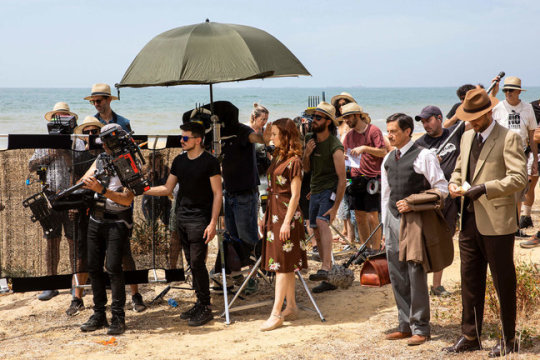
New upcoming period drama: Operación Barrio Inglés
Co-produced by RTVE with Onza (El Ministerio del Tiempo, Parot, Hernán) and the Andalusian production company Emociona Media, filming begins for Operación Barrio Inglés, a new intrigue drama for the TV channel La 1.
Spies, Nazis, British and a risky love story set in Huelva in 1940, a city where the conflicts of World War II are reproduced on a smaller scale.
Synopsis
World War II has just broken out.
Although Spain is "neutral" under Franco's dictatorship, Huelva is a strategic enclave to control the ships of both sides that cross the strait. In addition, it has an important British colony. For this reason, the Germans send members of the Secret Service to control what happens in the city, especially in the mines in the province of Huelva, owned by the English, and which provide Great Britain with ore for weapons and artillery.
In this way, Huelva becomes a veritable nest of spies from both sides, among whom the young Lucía is forced to move. She has just turned 25 and has been hired by an English mining company to work in their offices as a secretary.
There she meets the company's manager, Peter, an attractive Englishman with a dark past who drags Lucía into an adventure in which she will be forced to take sides. When you're in the middle of a war, being neutral is not an option.
Data Sheet
Executive Producer: Gonzalo Crespo Gil, José María Irisarri, Pilar Crespo, Gonzalo Sagardía, Clara Almagro, Santiago de la Rica
RTVE executive production: Borja Gálvez
Production Director: Onil Ganguly Directed by: Chiqui Carabante José Ramón Ayerra
Plot direction: Manuel Ríos San Martín Screenwriters: Manuel Ríos San Martín, Victoria Dal Vera, José Ortuño, Virginia Yagüe, Pablo Tobías and Tatiana Rodríguez
Photo Direction: Dani Salo (A.E.C.) and Alejandro Espadero (A.E.C.)
Art Direction: Hector Bertrand
Casting Direction: Juana Martínez
Music: Pablo Cervantes
Wardrobe: Matías Martini
Makeup and hairdressing: Anabel Beato
Cast
The series will star Aria Bedmar (Lucía), Peter Vives (Peter) and Rubén Cortada (Francisco).
The cast is completed by Paco Tous (José), Juan Gea (Enrique), Bea Arjona (Amparo), María Morales (Cinta), Chiqui Fernández (Rocío), Kimberley Tell (Agatha), Aida Ballmann (Miss Eva), Silvia Hanneman (Hanna), Yan Tual (Victor), Sue Flack (Miss Parker), Marco Cáceres (Juan), Almagro San Miguel (Toni), Carla Nieto (Sylvia), Ángela Chica (Belén), Clara Navarro (Rebeca), Fran Cantos (Oskar), Stefan Weinert (Schneider), Kevin Brand (Kurt), Frank Feys (Edward), Craig Stevenson (Goodwill), Edu Rejón (Gianni), Gregor Acuña (Dieter), José Luis Rasero (Civil Guard Captain), Gonzalo Trujillo (German Consul), Ken Appledorn (English ambassador) and Carlos Olalla (Father Damián), among others.
Filming
Operation Barrio Inglés will have as its settings the old dock of the English mining company and the area of Tinto River and its open-pit mines, as well as the Bellavista neighborhood in the town of Minas de Riotinto, the port of Punta Umbría and the Mazagón beach in Huelva. In Sevilla, among other locations, it will be shot at the Monsalves Palace, and in other areas of the city and province, and also in different parts of Jerez de la Frontera.
About the mines and their location:



This is the Tinto river, its waters are red due to the high concentration of sulfur and iron oxides in the land (it happens the same with the red lagoon of Mazarrón's mines, Murcia), although it's duscussed if the mining activity has been increasing this characteristic, its water are very acid and are poluted with heavy metals.
The Tinto river (ancient name: Luxia) starts its flow in the Aracena Mountain Range and after 100 km joins the Odiel river (ancient name: Urium) at the height of the city of Huelva.
The mines have been exploited since pre-roman era, by Iberians and Tartessians, to obtein iron, copper, magnesium, silver and gold, which improved trading with the Phoenician, Carthaginian, and Greek colonies that were near to this site (in fact, the city of Huelva was founded by Phoenicians, and it was called Onuba), and eventually the Carthaginians took control of the mines after their expansion throughthe Iberian peninsula. Later, it became one of the most important mining areas of the Roman Empire.
By end of the 19th century, due to económico crisis the Spanish government sold several mines to English Companies, and one of them was the Riotinto mines, who were bought by the Rio Tinto Company Limited (RTC) in 1873, as they were looking for metals that were very demanded in the country due to its high industrialization (in contrast, in Spain the industrialization was scarce and the two main regions in which it was developed were Catalonia and Basque Country)
The RTC was the builder and owner of the railway line that connected the mines with the port of Huelva, where it built a mineral dock to facilitate the unloading and transport of the extracted material by sea to England.
In Riotinto, the luxurious and exclusive neighborhood of Bellavista was built for English personnel, it was a Victorian-style neighborhood that was endowed with tennis courts, golf courses, its own cemetery, a Social Club or even a Presbyterian church.
Huelva capital will also develop under the English influence. The numerous workshops and facilities built by the RTC that gave work to more than seven hundred workers, such as the railway station, changed the appearance of the city and contrasted with the rise of a new bourgeoisie of both Spaniards and foreigners who found themselves linked to the company. The power of the company became such in the city that civil buildings depended on the interests of the company.
Proof of this are the Reina Victoria neighborhood, as a garden city that welcomed part of its employees; the construction of Casa Colón, which ended up becoming the headquarters for the company's offices; the disappeared English Hospital; or the gigantic mineral pier located on the Odiel River. The English population introduced football, being the Huelva Football Club the first football team in Spain, founded in 1889.
In Punta Umbría, the British managers of the Rio Tinto Company Limited (RTC) erected rest areas for their employees. Since 1883 some constructions were carried out in the area, in wood and of the bungalow type, but it would not be until 1896 when the RTC was granted the possibility of establishing houses in this area, to which many RTC employees and their families went in summer to the beach through the Riotinto railway.
In 1943, the corpse of Glyndwr Michael, a Welsh homeless, disguised as a British Marine oficer called William Martin with information about a fake plan of the Allies to attack Greece was found drowned near the coast of Huelva, in Punta Umbría. This was part of the Operation Mincemeat to distract the Nazis and attack Sicily instead. Operation Mincemeat was a important plot in episode 3×02, Tiempo de Espías, from El Ministerio del tiempo. Well, although in the episode the original Operation is cancelled and a character named William Martin later takes the place of the original "William Martin", so the Operation success.
Years later, in 1954 the Riotinto mines returned to national property, under the CEMRT (Compañía Española de Minas de Río Tinto)
#operación barrio inglés#aria bedmar#peter vives#rubén cortada#paco tous#juan gea#bea arjona#maría morales#chiqui fernández#kimberley tell#aida ballmann#silvia hanneman#yan tual#sue flack#marco cáceres#almagro san miguel#ángela chica#clara navarro#fran cantos#stefan weinert#kevin brand#frank feys#craig stevenson#period dramas#upcoming series#carla nieto#edu rejón#gregor acuña#jose luis rasero#gonzalo trujillo
4 notes
·
View notes
Photo
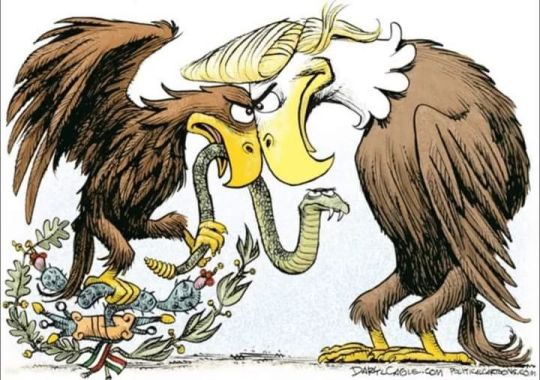
EL GRINGO Y EL. MEXICANO Gringo: - Hola, de donde eres? Mexicano: - Hola, soy de México Gringo: - Aahh! La tierra del Chapo Guzmán, los narcos, la marihuana, crímenes y extorsiones. Mexicano - Disculpe es usted adicto, verdad? Gringo - No!!! ¿por qué? Mexicano: -Porque si usted fuera deportista me habría identificado con Ana Guevara, Hugo Sanchez, Julio Cesar Chavez, el finito, El chicharito Hernández, el Canelo Alvarez, Rafael Márquez, etc. Y si usted fuera culto, me habría preguntado sobre las grandes culturas como los Mayas, los Aztecas, los Olmecas, los Chichimecas... Y si usted hubiera viajado me preguntaría por nuestras ruinas arqueológicas, nuestras ciudades coloniales, nuestras grandes megalópolis o nuestras exuberantes playas... O por nuestra biodiversidad de selvas, playas, desiertos, bosques... Me habría identificado con nuestros grandes pintores, Diego Rivera, Rufino Tamayo, Frida Kahlo, José Clemente Orozco, o nuestros compositores: Agustín Lara, Consuelo Velázquez, Armando Manzanero, Juan Gabriel Jose Alfredo Jimenez, o nuestros escritores y poetas: Sor Juana Inés de la Cruz, Juan Rulfo, Octavio Paz, Juan José Arreola, Elena Poniatowska, amado Nervo, Jaime Sabines, o nuestros inventores y científicos: Manuel Mondragón, Guillermo González Camarena, Luis Ernesto Miramontes, nuestros cineastas: Ismael Rodríguez, Emilio Fernández, Alfonso Cuaron, Guillermo del Toro, Alejandro González Iñárritu, Emmanuel Lubezki e incluso Luis Buñuel que siendo español adoptó la nacionalidad mexicana... Y si usted fuera un gourmet me habría preguntado por los Tamales, la Cochinita Pibil, el Mole, el Adobo, los chilaquiles, los Chiles en nogada, el Guacamole, el Pan de Muerto, etc. Por nuestras bebidas: el tequila, El mezcal, los vinos y cervezas. Sin embargo, veo que solo conoce al proveedor de su adicción... Sólo quiero probarle que México es mucho más de lo que la gente ignorante cree. Que somos muchos mexicanos honestos, que incluso si no nos conoce le abriremos las puertas de nuestra casa y le encantará conocernos y visitarnos, porque México es aún muchísimo más maravilloso de lo que yo pueda contarle! SEAN TODOS INVITADOS A MÉXICO! autor desconocido https://www.instagram.com/p/ChQiCMMOuyuEJZFDQk6Uy2TLNvpGedJgTQx6gI0/?igshid=NGJjMDIxMWI=
19 notes
·
View notes
Photo

Portrait of John I of Castile by Vicente Arbiol y Rodríguez.
He was the son of King Henry II of Castile and Queen Juana Manuel de Villena, daughter of the famous Don Juan Manuel. He attempted to seize the kingdom of Portugal but was crushingly defeated at the siege of Lisbon in 1384 and at the battle of Aljubarrota in 1385. He died five years later.
#vicente arbiol#vicente arbiol y rodriguez#monarquia española#reyes de españa#reyes de castilla#rey de castilla#juan i de castilla#viva el rey#spain in the middle ages#crown of castile#house of trastamara#casa de trastamara#rey juan i de castilla#full length portrait#kingdom of castile#full-length portrait#in armour
5 notes
·
View notes
Photo
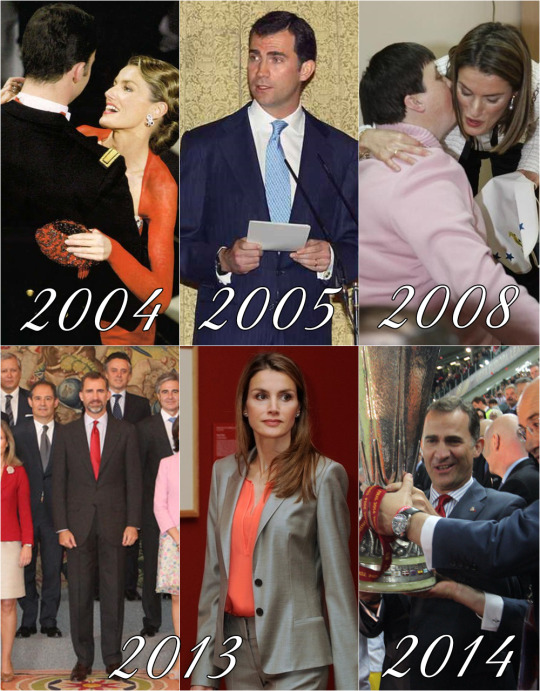
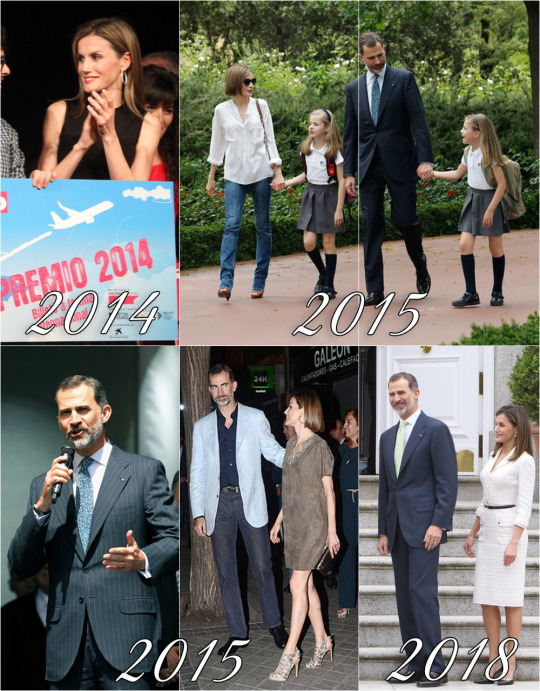

Felipe and Letizia retrospective: May 14th
2004: Wedding between Danish Crown Prince Frederik and Miss Mary Elizabeth Donaldson at the Copenhagen Cathedral in Copenhagen, Denmark.
2005: Closed 10th Meeting of the Council Spain-United States, with a dinner at the Hotel Alfonso XIII in Seville.
2008: Visited the physically handicapped centre ‘Bilbilis- Amibil’
2013: Audiences at la Zarzuela & Visited the ‘Spanish Drawings from the British Museum: Renaissance to Goya’ exhibition.
2014: Final of FameLab 2014 & UEFA Europa League Final match between Sevilla FC and SL Benfica at Juventus Stadium in Turin, Italy.
2015: International Charlemange Prize of Aachen 2015 (Der Internationale Karlspreis zu Aachen) in Aachen, Germany; Picked up King Felipe at la Zarzuela’s heliport (1, 2) & FameLab
2018: Offered a lunch to the president and first lady of Colombia, Juan Manuel Santos Calderón and María Clemencia Rodríguez de Santos at la Zarzuela
2019: Meeting of the Board of Trustees of the Cotec Foundation & Final of “FameLab España 2019”.
2020: Videoconference with Spanish Association Against Cancer (AECC) and Medical Societies to Fight Cancer & Visit to the National Center for Monitoring and Coordination of Emergencies (CENEM)
2021: Audience with Ángel Gurría, secretary-general of the Organisation for Economic Co-operation and Development (OECD)
F&L Through the Years: 758/??
#King Felipe#Queen Letizia#King Felipe of Spain#Queen Letizia of Spain#King Felipe VI#King Felipe VI of Spain#F&L Through the Years#May14
9 notes
·
View notes
Text
Exposición “Luz a tu propia química (al desnudo)”, Colectiva
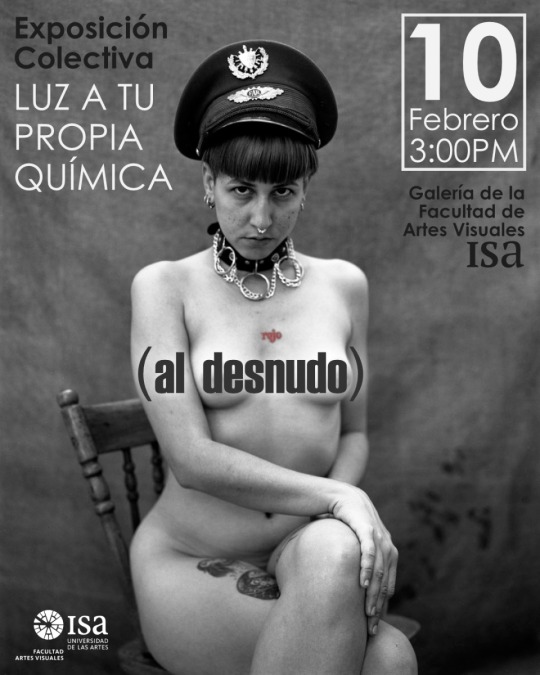
View On WordPress
#2023#Adriano Alfredo Padrua Hernández#Alexandra Álvarez Carvajal#Asbel Paz#Daimi Casas#Daniel Martínez Reyes#Daniel Mendez Ruiz#Edel López#Héctor Ismael González Soto#Ioan Carratalá#Irving Alfaro Ferrer#Isabel Rodríguez Blanco#Javier Alejandro Bobadilla#Joanne Soto Fernández#Juan Carlos Alom#Julio Sauri Bello#Lázaro del Campo#Leonor Menes#Manuel Larrañaga Sardiñas#Maribel Pérez Velázquez#Marirosa Beltrán#Muestra Colectiva#Omar Merallas Cruz#Ossain Raggi#Pablo V. Bordón Pardo#Samuel David Reyes Peñalver#Sandra Zerquera Monterde#Sara Van Wingerden#Sergio Romero#Suayma Martínez Parra
1 note
·
View note